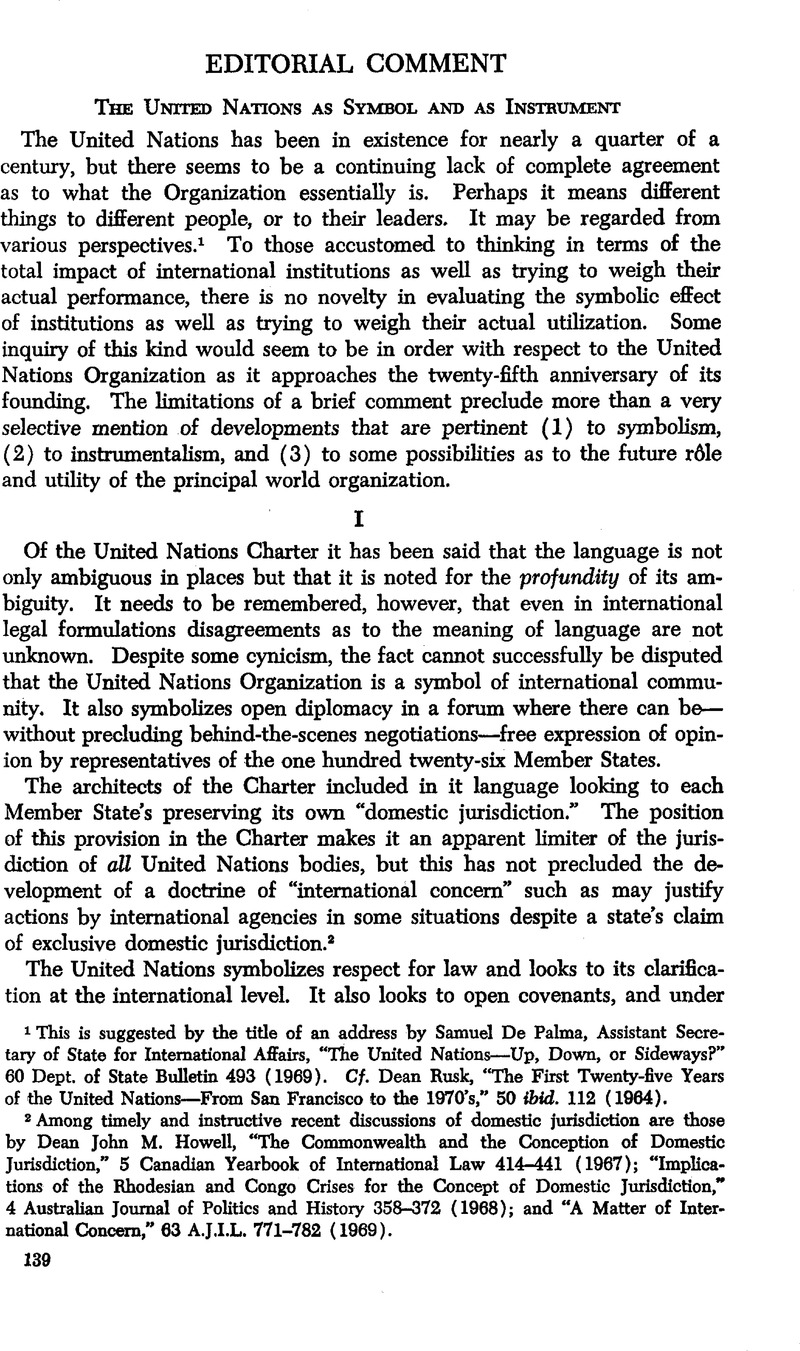Published online by Cambridge University Press: 28 March 2017

1 This is suggested by the title of an address by Samuel De Palma, Assistant Secretary of State for International Affairs, “The United Nations—Up, Down, or Sideways?” 60 Dept. of State Bulletin 493 (1969). Cf. Dean Rusk, “The First Twenty-five Years of the United Nations—From San Francisco to the 1970's,” 50 ibid. 112 (1964).
2 Among timely and instructive recent discussions of domestic jurisdiction are those by Dean John M. Howell, “The Commonwealth and the Conception of Domestic Jurisdiction,” 5 Canadian Yearbook of International Law 414-441 (1967); “Implications of the Rhodesian and Congo Crises for the Concept of Domestic Jurisdiction,” 4 Australian Journal of Politics and History 358-372 (1968); and “A Matter of International Concern,” 63 A.J.I.L. 771-782 (1969).
3 See article referred to in note 7 below. To some extent relatable to the subject here mentioned is the record of the United Nations with respect to trusteeship and non-self-governing territories. See 13 Whiteman, Digest of International Law 679-701 (1968).
4 John W. Halderman, “Some International Constitutional Aspects of the Palestine Case,” in a symposium on The Middle East Crisis: Test of International Law, published in the Winter, 1968, issue of Law and Contemporary Problems, p. 78. See also the same author's volume, The United Nations and the Rule of Law (1966), reviewed in 62 A.J.I.L. 538 (1968).
5 Controlling Conflicts in the 1970's, p. 9 (1969).
6 S. M. Schwebel, “The Origins and Development of Article 99 of the Charter,” 28 Brit. Yr. Bk. Int. Law 371-382, at 382 (1951). As to peacekeeping in general, see the Report of the Special Committee on Peace- Keeping Operations, May 16, 1967, as quoted in part by Marjorie Whiteman, Digest, op. cit. note 3 above, at 604-607.
7 See Morris B. Abram, “The United Nations and Human Rights,” 47 Foreign Affairs 363-374, at 371 (1969). The writer notes as a continuing debatable matter the question whether goals and values in the area of human rights exist among the world's people.
8 U.N. Chronicle, Jan. 1967, p. 42; U.N. Doc. A/Res. 2222 (XXI); 18 U.S. Treaties 2410; T.I.A.S., No. 6347.
9 U.N. Doc. A/6166 (Dec. 18, 1965).
10 See Walter Kotschnig, “The United Nations as an Instrument of Economic and Social Development,” 22 International Organization 16-43 (1968).
11 Robert Keohane, “Who Cares About the General Assembly?” 23 International Organization 141-149 (1969).
12 Twentieth Annual Report of the Commission to Study the Organization of Peace (a United States citizens’ study group), as summarized in press reports of Sept. 30, 1969.